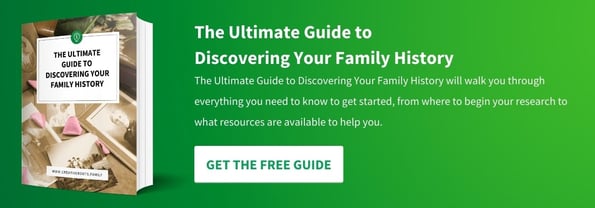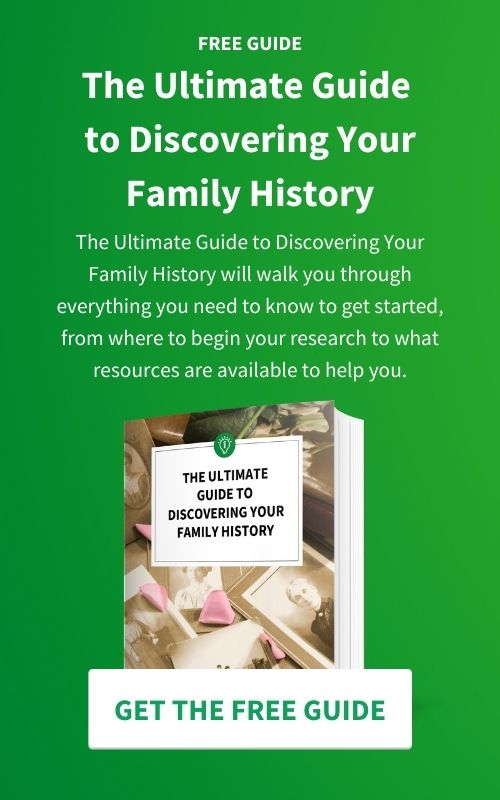A Comprehensive Step-by-Step Guide to Verifying Your Records
Verifying ancestry records is a crucial aspect of genealogy, ensuring the accuracy and reliability of your family tree. In this comprehensive guide, we'll navigate the challenges and intricacies of this rewarding process. From understanding the basics to applying standards of proof, we'll equip you with the skills needed for a meticulous journey through your family history research.
Understanding The Basics of Ancestry Records Verification
What are Ancestry Records?
Ancestry records serve as invaluable windows into the past, offering a comprehensive view of one's lineage. These records encompass a diverse array of documents, each providing unique insights into the lives of our ancestors. Here's a breakdown of the key types of ancestry records:
Birth Certificates
These documents record the birth details of an individual, including their name, date of birth, and often the names of parents. Birth certificates are foundational in establishing familial relationships and chronological order within a family tree.
Marriage Records
Marriage records document the union of two individuals, typically including the names of the couple, date of marriage, and sometimes details about their parents. Verifying marriage records is crucial for understanding the formation of new family branches and the integration of individuals into existing family structures.
Census Data
Census records provide snapshots of populations at specific points in time, enumerating individuals and detailing household composition. Analyzing census data aids in tracking family movements, demographic changes, and identifying additional family members residing in the same household.
Immigration documents capture information about individuals entering a new country, including arrival dates, ports of entry, and sometimes family details. These records are pivotal for understanding migration patterns, ancestral movements, and may unveil connections with extended family members.
Other Vital Records
Examples of other vital records include: death certificates, divorce records, and military service records. Additional vital records contribute crucial information, such as the cessation of life, family dynamics after divorces, and individuals' military service histories.
Common Challenges in Ancestry Records Verification
Verifying ancestry records is not without its challenges, and a keen awareness of these hurdles is essential for constructing an accurate family history. Let's delve deeper into the common challenges encountered during the verification process.
Inaccuracies in Historical Records
Historical records may contain errors introduced during data entry, transcription, or due to deteriorating document conditions. Cross-referencing with multiple sources and considering the historical context can help identify and rectify inaccuracies.
Misspellings
Names, locations, or other vital details may be misspelled in records, making it challenging to connect the information accurately. Employing variant name searches, considering phonetic variations, and leveraging context clues can aid in overcoming misspelling challenges.
Incomplete Information
Documents may lack essential details, leaving gaps in the narrative and hindering a comprehensive understanding of family connections. Supplementing incomplete records with additional sources and utilizing indirect evidence can help fill information gaps and create a more nuanced family history.
Addressing these challenges requires a meticulous and thorough approach to ensure the reliability and accuracy of the family history being constructed. By understanding the nature of ancestry records and recognizing potential pitfalls, researchers can navigate these challenges with greater confidence and precision, ultimately creating a more robust representation of their ancestral heritage.
Know What Evidence to Look For and Where to Find It
In the pursuit of uncovering ancestral connections, it is essential to know the types of evidence that can provide valuable insights into the past. Moreover, understanding where to find this evidence is crucial for conducting thorough and effective ancestry records verification.
Types of Evidence in Ancestry Records
Official Documents, as mentioned previously (birth certificates, marriage licenses, and death certificates), are considered the primary source of vital information and provide precise details about an individual's birth, marriage, and death. They serve as foundational documents for constructing a family tree.Census Records record the population through regular enumerations, offering a snapshot of households and are not only an invaluable source for tracking family movements and identifying additional relatives. Census document also provide some light on how your family member they lived, what their occupation was at the time of the census, approximate dates when they may have immigrated, the annual income and much more can be obtained through the census documents.
Military Records such as draft registrations, service records, and pension files provide insights into an individual's military service, including enlistment dates, ranks, and participation in specific conflicts. These records are crucial for understanding an ancestor's wartime experiences.
Immigration and Naturalization Records like ship manifests, passenger lists, and citizenship documents records detail the immigration journey, including departure and arrival information, providing a glimpse into the migratory patterns of ancestors. Naturalization records mark the final step in the journey towards citizenship. Who is greeting them on their arrival, how much money they have available at the time of entry. Extended family members may have travelled together providing researchers with another clue to solving your journey.
Family Bibles and Diaries are personal narratives and records passed down through generations, often containing vital information about births, marriages, and deaths within the family. These can provide unique insights not found in official documents. They also provide the researcher with samples of their handwriting which may come in handy when searching records that require a signature.
Where to Find Evidence
Local Archives house physical repositories for historical records, including vital documents, land records, wills, and more. Local archives are treasure troves of regional history, providing access to primary source materials that may not be available elsewhere. Researchers can delve into the rich tapestry of local events and familial connections.Online Databases have made research easier with online services like Ancestry.com, FamilySearch, government databases. Online platforms offer a vast collection of digitized records, allowing researchers to access documents from the comfort of their homes. Ancestry.com and FamilySearch, among others, provide user-friendly interfaces and diverse datasets.
Libraries and Museums have repositories of rare manuscripts, historical documents, and specialized collections that may not be available in other settings. These institutions provide opportunities for in-depth research, offering access to unique materials that can enhance and corroborate findings from other sources.
Navigating these diverse sources requires a strategic and systematic approach. Researchers should leverage a combination of both physical and online resources, recognizing the complementary nature of archival and digital materials. By exploring these avenues, individuals can assemble a comprehensive collection of evidence that paints a vivid portrait of their ancestral past.
Standards of Proof in Ancestry Verification
What are Standards of Proof?
In the realm of genealogy, adhering to rigorous standards of proof is paramount to establishing the credibility and accuracy of ancestral connections. The Board for Certified Genealogists (BCG) provides a set of standards that serves as a gold standard for genealogical research. Let's explore these standards and their significance in verifying ancestry records.
BCG Standards of Proof
Reasonably Exhaustive Research means to conduct thorough research, exploring a wide range of sources relevant to the research question or problem. This standard ensures that researchers leave no stone unturned, minimizing the likelihood of overlooking critical evidence.
Complete and Accurate Source Citations means to clearly and accurately cite the sources of information, allowing others to verify and replicate the research. Proper citation is fundamental for transparency and scholarly integrity, enabling the replication of research methods and findings.
Analysis and Correlation of Collected Information allows you to identify patterns, inconsistencies, and relationships. Critical thinking and analytical skills are essential to extracting meaningful conclusions from the gathered evidence.
Resolution of Conflicting Evidence address conflicting or contradicting information which is crucial for constructing a reliable family narrative and avoiding inaccuracies. Resolving conflicts is pivotal for creating a cohesive family narrative and mitigating the risk of perpetuating inaccuracies.
Soundly Reasoned, Coherently Written Conclusion better articulates the researcher's findings and the basis for those conclusions. Clear and logical communication is key to conveying the reliability and validity of the research process and outcomes.
Correlation with Indirect or Negative Evidence ensures a comprehensive evaluation of all available information. Acknowledging the absence of evidence or indirect clues is crucial for a well-rounded and nuanced understanding of familial connections.
(Source: Board for Certified Genealogist)
These BCG standards emphasize the importance of meticulous research, thoughtful analysis, and clear communication in the genealogical process. By incorporating these standards into ancestry verification, researchers elevate their work to a professional level, contributing to the robust and scholarly foundation of genealogy as a discipline.
The Process of Verification: A Step-by-Step Guide
Embarking on the journey of uncovering one's family history is a captivating and rewarding pursuit that often requires a meticulous and systematic approach. The process of verification outlined in this step-by-step guide serves as a comprehensive roadmap for individuals eager to delve into their genealogical roots. Through a series of carefully structured steps, this guide aims to empower researchers in navigating the intricate web of family connections, historical records, and personal narratives.
By emphasizing the critical aspects of contextual understanding, confidence level assessment, and diligent recording practices, this guide not only facilitates the establishment of proof but also encourages a continuous learning mindset. As genealogical research evolves, the process remains adaptable, integrating digital tools and collaboration to ensure that each researcher's journey is as enriching as the familial stories they uncover.
Step 1: Fact Collection
Family Interviews
Initiate conversations with older family members to gather oral histories and personal anecdotes. Document names, dates, and locations shared during these discussions. Record not only factual information but also the context and emotions associated with the stories.
Document Review
Examine family heirlooms, photo albums, and letters for potential clues. These artifacts may contain valuable information about ancestors, their relationships, and life events. Pay attention to details such as handwriting, postmarks, and any handwritten notes on the back of photos.
Online Research
Explore genealogical websites, social media groups, and forums dedicated to family history. Utilize search engines to uncover existing family trees and records shared by other researchers. Consider reaching out to distant relatives who may have additional insights or documentation.
Step 2: Cross-Verification
Date and Place Consistency
Check for consistency in dates and locations across various documents. Identify discrepancies and prioritize records that align with the majority of available information. Cross-verify with historical events to ensure timelines are accurate.
Cross-Reference Names
Verify names of individuals, including variations due to nicknames, misspellings, or changes over time. This step helps in ensuring accurate connections. Consult multiple sources to validate the correctness of names.
Analyze Relationships
Examine relationships stated in documents, such as parent-child or spouse relationships. Confirm that relationships are coherent and supported by multiple sources. Consider creating visual relationship charts to better understand family structures.
Step 3: Document Analysis
Source Reliability
Evaluate the reliability of each document source. Official records from government agencies or religious institutions often hold more weight than secondary sources. Assess the credibility of the document creators and their proximity to the events in question.
Consider Bias and Errors
Be aware of potential biases or errors in documents. Factors like informant bias, transcription errors, or cultural influences may impact the accuracy of the recorded information. Compare multiple perspectives to mitigate bias.
Assess Record Completeness
Check for completeness in documents. Incomplete records may lead to assumptions, so strive to find comprehensive information that covers relevant details. Verify if there are missing pages or sections in official records.
Step 4: Corroboration
Multiple Document Confirmation
Search for multiple documents that independently verify the same information. Consistency across diverse sources strengthens the validity of your findings. Look for supporting evidence across census records, birth certificates, and other historical documents.
External Collaboration
Engage with other researchers or family members to validate your discoveries. Collaboration can provide fresh perspectives and additional evidence. Share your findings with family members and seek their input on the accuracy of the information.
Utilize DNA Testing
Consider utilizing DNA testing to confirm relationships. DNA results can corroborate or challenge information found in historical records, offering a more scientific validation. Work with reputable DNA testing companies and interpret the results in conjunction with documentary evidence.
Step 5: Establishing Proof
Standard Application
Apply the appropriate standard of proof based on the nature of the evidence. Recognize that certain records may meet a higher standard of proof than others. Differentiate between direct evidence and circumstantial evidence in building a convincing case.
Contextual Understanding
Consider the historical context surrounding the records. Understanding societal norms, migration patterns, and historical events helps in interpreting information accurately. Research the legal and cultural aspects of the time period to contextualize your findings.
Confidence Level Assessment
Assign a confidence level to each piece of information. Acknowledge areas of uncertainty and be transparent about the limitations of your findings. Clearly articulate the strength of evidence and where further research may be needed.
Step 6: Recording and Citation
Create a Detailed Family Tree
Document your family tree in a detailed and organized manner. Include dates, locations, and relationships, providing a visual representation of your research. Use genealogy software or online platforms for a structured presentation.
Citation Practices
Accurately cite the sources of your information. Proper citations enable others to trace your steps and evaluate the reliability of your research. Follow a consistent citation style and include sufficient details for others to locate the same sources.
Digital Record Keeping
Consider using digital tools and software to maintain an organized record. Digital platforms often provide features for efficient data management and sharing. Regularly back up your digital records to prevent loss and ensure accessibility over time.
Step 7: Regular Review
Continuous Learning
Stay informed about advancements in genealogical research methods and available records. Continuous learning enhances your skills and keeps your research up-to-date. Attend conferences, join genealogy groups, and subscribe to relevant publications.
Reevaluate with New Information
Regularly revisit your family tree when new records or information become available. Update your findings based on the latest discoveries, ensuring the ongoing accuracy of your research. Keep an eye on newly digitized records, archives, and advancements in technology that may provide additional insights.
Conclusion
In summary, this meticulous process involves understanding the basics, identifying evidence, adhering to standards of proof, and following a systematic verification guide. Emphasizing the importance of accuracy and reliability, this guide equips you with the skills needed to navigate the complexities of your family history research. Encourage fellow enthusiasts to adopt these practices, contributing to a more accurate representation of our collective ancestry.


Article by Carol Walsh
Carol Walsh is the CEO of Creative Roots, a professional genealogy company. She has a passion for preserving family history and storytelling. Carol's research methodology centers around fact-finding and publishing in a format that readers can use to preserve the stories. Her ultimate goal is to help families connect with their past and each other.





